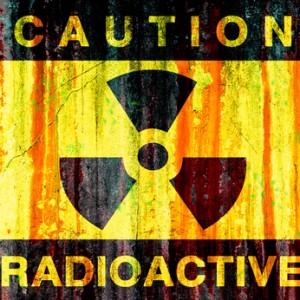David Kingman analyses the Hinkley Point nuclear power scheme in intergenerational terms

The government has recently announced that it will provide a £2 billion financial guarantee to two state-owned Chinese nuclear power companies in return for their investment in the new nuclear power plant at Hinkley Point in Somerset. This development represents the government’s latest attempt to try and get the troubled nuclear energy scheme off the ground, after their design and construction partner, French firm EDF Energy, announced they were delaying their investment in the project earlier this year. The government hopes that this latest move will be the final step which is necessary to get the power plant underway, although the scheme’s critics are continuing to voice their opposition.
The key question from IF’s perspective is whether this represents a good deal for future generations – and on that score, several major doubts still remain.
A “low-carbon” future?
The government argues that nuclear power is the key to satisfying the UK’s future energy needs while meeting its legally binding carbon-reduction targets. Amber Rudd, Britain’s Energy Secretary, argued that the £2 billion guarantee represents value for money for the taxpayer, as building Hinkley Point should enable Britain to embrace a low-carbon future without having to rely on intermittent sources of renewable energy such as wind and solar, or having to import large quantities of gas.
The new reactor at Hinkley Point would be the first one to be built in Britain for 20 years, and would be the first of a wave of new nuclear power plants that the government hopes to bring forward as Britain’s existing coal and nuclear generating capacity is retired over the next decade.
However, critics of the Hinkley Point scheme have highlighted three significant flaws with it. Firstly, there is the projected cost: in order to meet the forecast capital investment of £24.5 billion, EDF and its Chinese partners have been guaranteed a fixed price for the electricity it will produce of £89.50 MW/hr for the first 35 years, which will be indexed to CPI inflation. This is more than doubled the current cost per MW/hr in the UK’s wholesale electricity market, and one estimate suggests it would make Hinkley Point the most expensive nuclear power plant in the world.
Although future technological developments are uncertain, critics have claimed that this price is likely to be extremely poor value as the cost of renewables is likely to fall. A recent report from Policy Exchange, Powering Up, argued that the government should back onshore wind energy instead of nuclear, as its cost could fall to £60 MW/hr by 2020.
Secondly, further delays with the Hinkley Point project seem inevitable; It was originally proposed to come on-stream in 2017, but that date has already been put-off to 2023 and is likely to be postponed further. This is due in part to the difficulty of building a partnership of investors with access to enough capital to deliver the scheme, and also the experimental nature of the proposed reactor, which is of a new design that hasn’t been used anywhere else before. Similar reactors are currently being installed in new nuclear plants in France and Finland, but bother are years behind schedule and billions of euros over budget.
Thirdly, there are the two problems which always accompany new nuclear power stations: waste and safety risks. It has been estimated that a nuclear plant on Hinkley Point’s scale would generate enough “high-level” nuclear waste over its 60-year lifetime to fill an Olympic-sized swimming pool. Such waste remains lethally radioactive for thousands of years and must be stored somewhere to keep the public safe, but no suitable facility has been identified in advance. Overshadowing this debate is the spectre of the Fukushima nuclear disaster which happened in 2012, which brought home the inherent dangers of nuclear energy to many people.
A fair deal for future generations?
One thing which is clear is that building a new nuclear power plant which would take almost 10 years to build and have a 60 year working life is very much an intergenerational commitment. Weighing up the available evidence, it seems that future generations are being handled a larger economic burden and a significant safety risk when alternative forms of low-carbon energy – which we can reasonably predict would be cheaper and safer – are available instead. There is no doubt that Britain needs to de-carbonize its energy supply, but the cost-benefit calculation for Hinkley Point seems too unbalanced for this to be the right answer to the problem.
